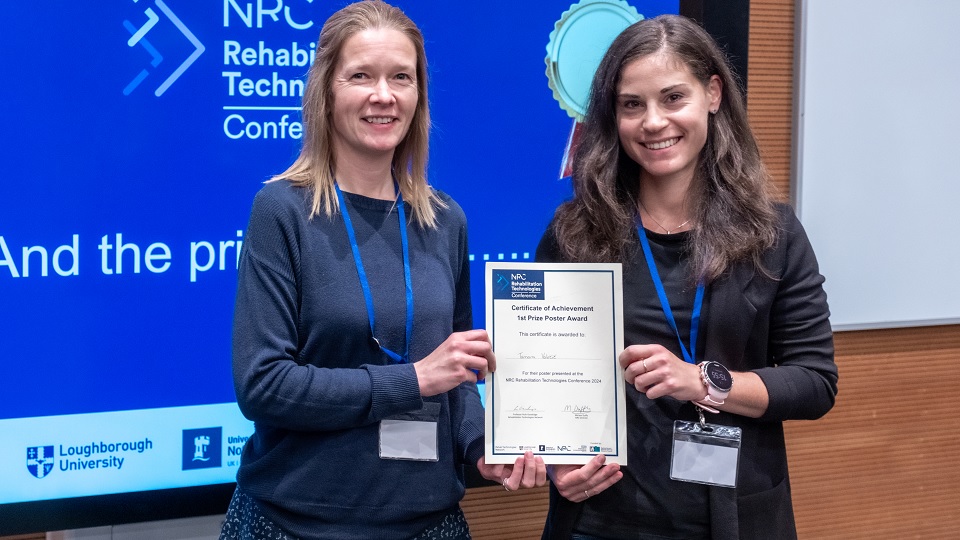Tamara Valenčič, studying at Loughborough University and part-funded by the National Rehabilitation Centre, explained that it’s not just about the mechanics of knee joints – it’s understanding how the central nervous system communicates with the knee muscles after ACL surgery.
Every year, there are more than 90,000 surgical procedures for ACL injuries in the US, and half of all knee ligament injuries are to the ACL, according the Ministry of Defence[i].
Young, athletic people are the most frequent victims of ACL injuries because they’re generally caused by the kind of sudden stops and twists common during sports. The knee pops and swells, and generally becomes hard to move or walk on.
Tamara said: “I used to be a skier, and I’ve seen it happen a lot to other skiers, though luckily it’s never happened to me.”
Surgeons can repair the injury with graft from a hamstring tendon so the mechanics of moving the knee work again, but the new ligament can’t do one thing as well – talk to the rest of the nervous system.
As well as keeping the knee stable, the original ligament fed information to the brain about what it was doing, but replacement ligaments aren’t designed for that job. This means brains are working with different information and in turn may not give enough signals to switch on the muscles, and thus support rebuilding muscles and movement after the injury.
Tamara’s poster explained her study examining how the signals between nervous system and the knee are affected long term, which is the first step towards developing more effective rehabilitation techniques for ACL injuries.
[i] https://assets.publishing.service.gov.uk/government/uploads/system/uploads/attachment_data/file/384513/knee_ligament_damage.pdf
